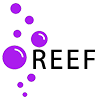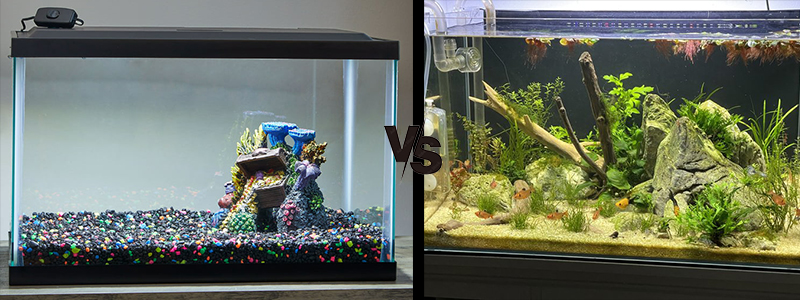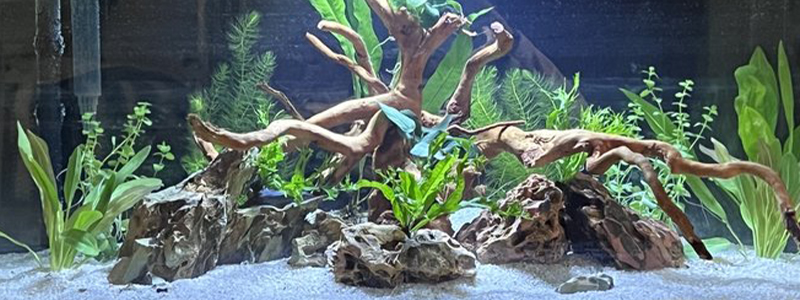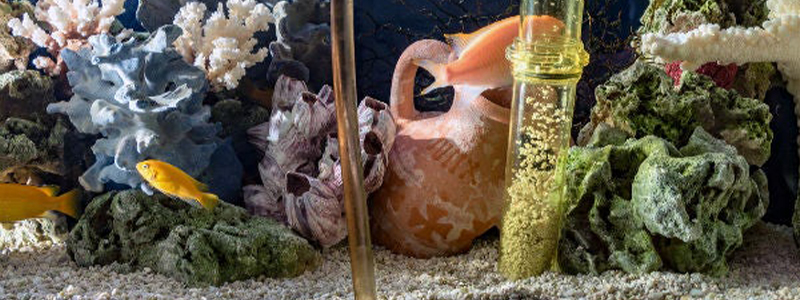Few things can get your new aquarium off to a bad start quicker than a refractometer that isn’t properly calibrated. After all, saltwater is the first thing that goes into your new tank – get it wrong and you’re doomed to problems right from the start.
I almost learned that the hard way…
Disclosure: This article contains affiliate links. When you follow a link to purchase the products, I sometimes earn a commission, at no additional cost to you. Read my full disclosure here.
A used refractometer was posted for sale on my local Marine Aquarist Society forum, so I grabbed it. It was in fantastic shape and I figured I could use the money I saved for some other equipment. The person selling it even tossed in a bottle of refractometer calibration solution.
The instructions that came with it called for using distilled water and calibrating it to zero. However, many aquarists believe it is better to use a calibration solution that has the same salinity as natural saltwater (35 ppt, or 1.0265 specific gravity at 77° F / 25° C) since that is the specific solution/liquid they’ll always be using it to test.
To get ready for my first batch of saltwater, I let both the refractometer and the bottle of calibration solution sit in a room that was as close to 77° as possible for a few hours. Then I placed a few drops of solution on the refractometer and calibrated it to 35 ppt.
Then I mixed my saltwater. It needed a little more salt (I’m using E.S.V.’s 4-part saltwater mix) than the instructions called for in order to reach 35 ppt. Other than that it was smooth sailing – the refractometer worked great. However, it turns out the calibration solution did not…
The day after mixing my saltwater and putting it in my new aquarium, the water turned hazy. At first, I thought it was a little bacteria bloom – which is quite common in new tanks. But the next morning I noticed the water had cleared and left a white dust on the bottom of the tank. Something had precipitated out of the water – most likely calcium, possibly salt.
My immediate thought: something isn’t right with the refractometer. So, I re-calibrated it – this time following the refractometer instructions and using distilled water (actually I used RODI water.)
Sure enough, the original calibration had set the meter way too low. Then I realized my mistake – I never asked the previous owner how old the bottle of calibration fluid was or how it was stored, and there is no expiration date stamped on the bottle. There was a VERY good chance some of the base liquid evaporated off, or the solution has surpassed its shelf life.
Thanks to a very handy online article Randy Holmes-Farley wrote on homemade salinity calibration solution in Reefkeeping Magazine, confirming my suspicion was pretty quick and easy – all it took was a quick trip to the grocery store for a 79-cent tub of table salt (no iodine added).
Per Mr. Holmes-Farley all you need to do is dissolve 36.5 grams of table salt in 963.5 grams (e.g. mL) of distilled water (again, I used RODI water). And this is a scale-able ratio. So, using a kitchen scale to measure, I just mixed 18g of salt in 481.75 g of RODI water. (The article also gives directions for using measuring cups if you don’t have a kitchen scale.)
I used my fresh, homemade solution to calibrate the refractometer. And then took a reading of RODI water on the refractometer – which measured exactly zero, confirming the refractometer was now properly calibrated.
With the properly calibrated meter in hand, I checked the water in my tank next.
Sure enough, the salinity was way too high
Fortunately, there was nothing in my tank yet but the saltwater. So I simply replaced a half-gallon at a time with some pure RODI water until it came down to 35 ppt (or 1.0256 specific gravity).
If this had happened when I had livestock in the tank, the results could have been disastrous.
So, here are three quick tips for calibrating your refractometer:
- If you use a manufactured calibration solution – whether it’s store-bought or second-hand, make sure it’s relatively new and well stored
- Better yet, make your own solution – it is very easy, you KNOW it’s fresh each time you use it, and it costs less than $1 and 5 minutes to make
- Make sure your refractometer – not the calibration solution – is as close to the calibration temperature stated in the instructions that came with it as you can. (Don’t worry about the calibration solution temperature: you’re only putting 2-3 drops of solution on the refractometer prism – within 30-45 seconds it will be the same temperature as the refractometer.).



